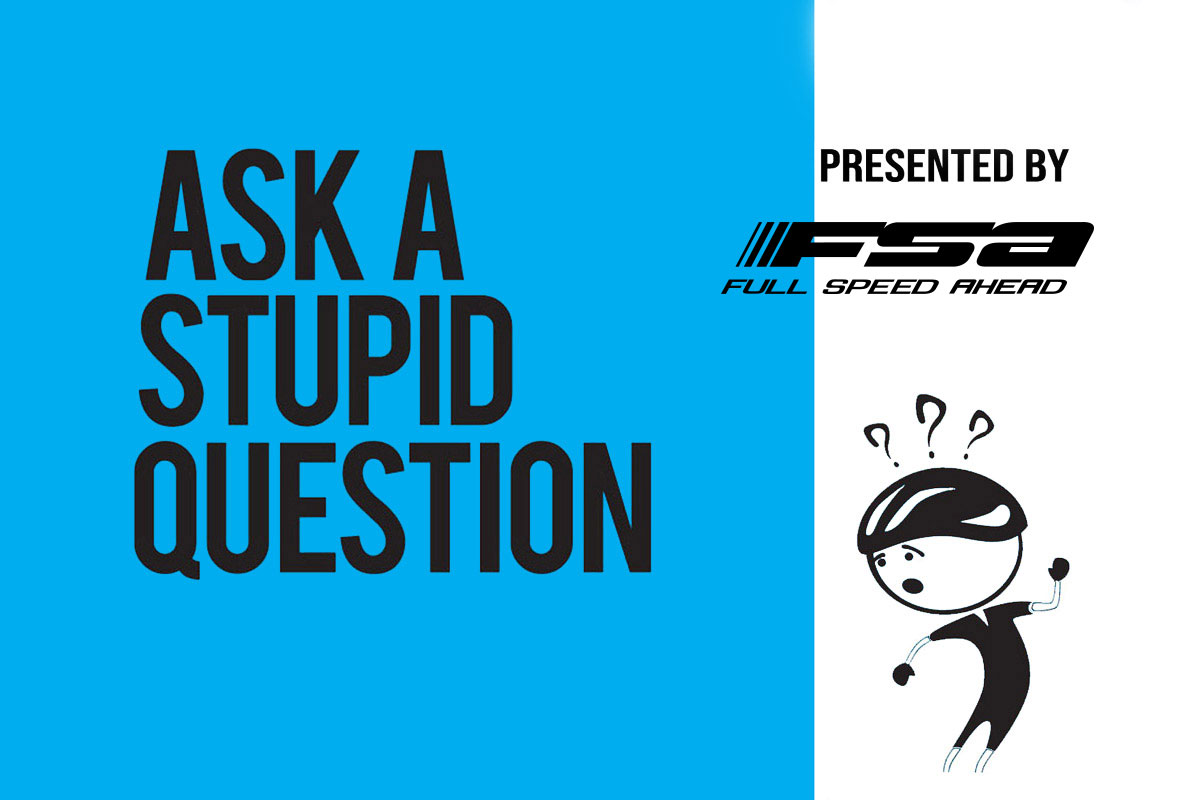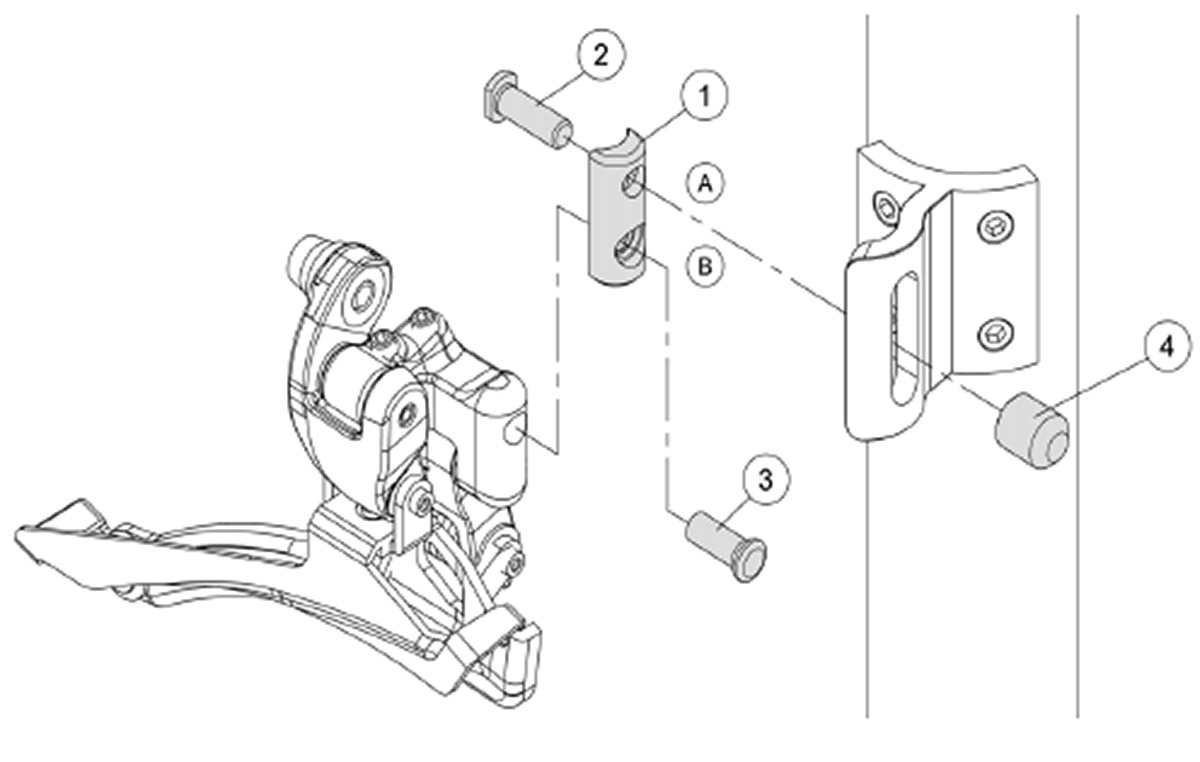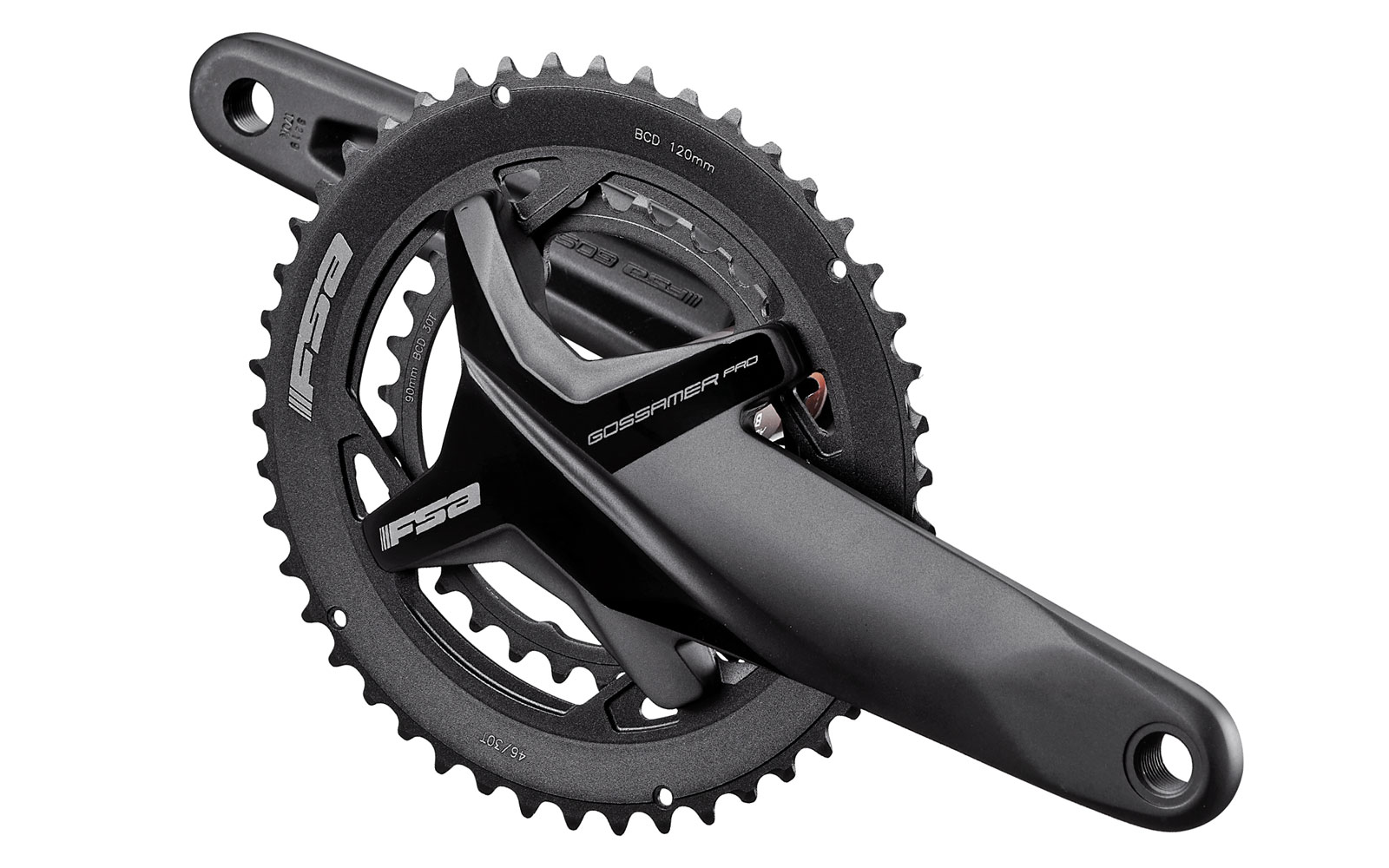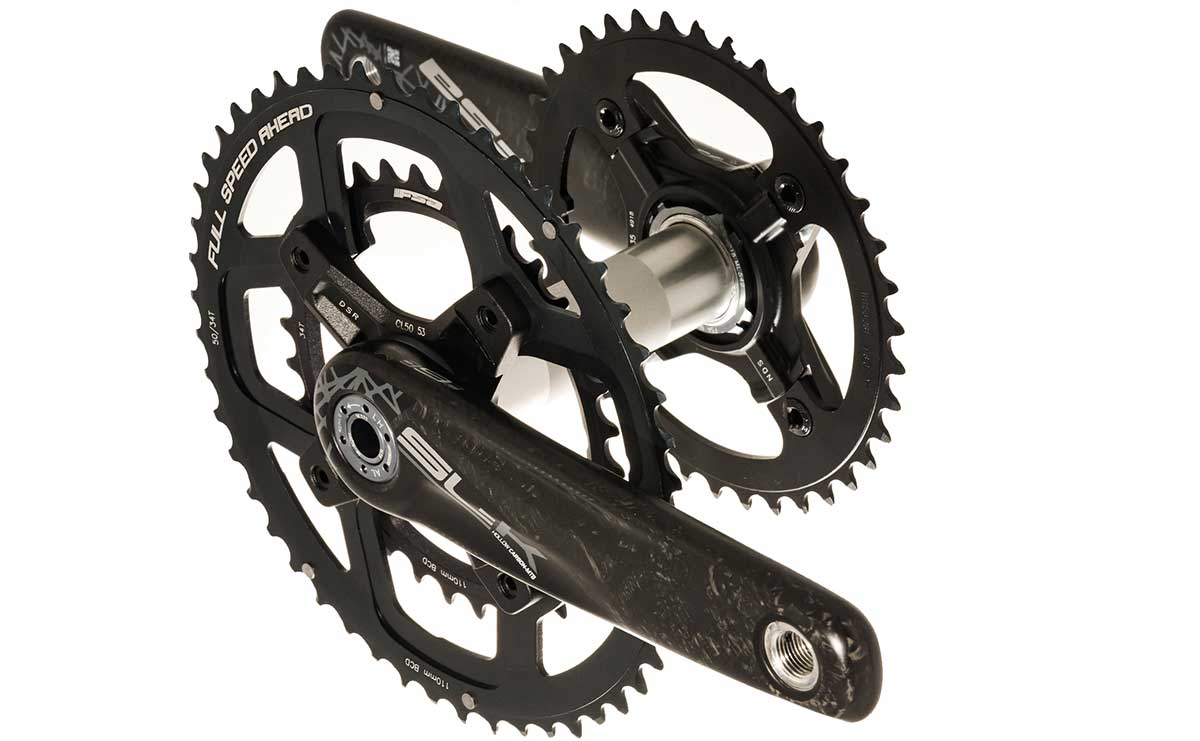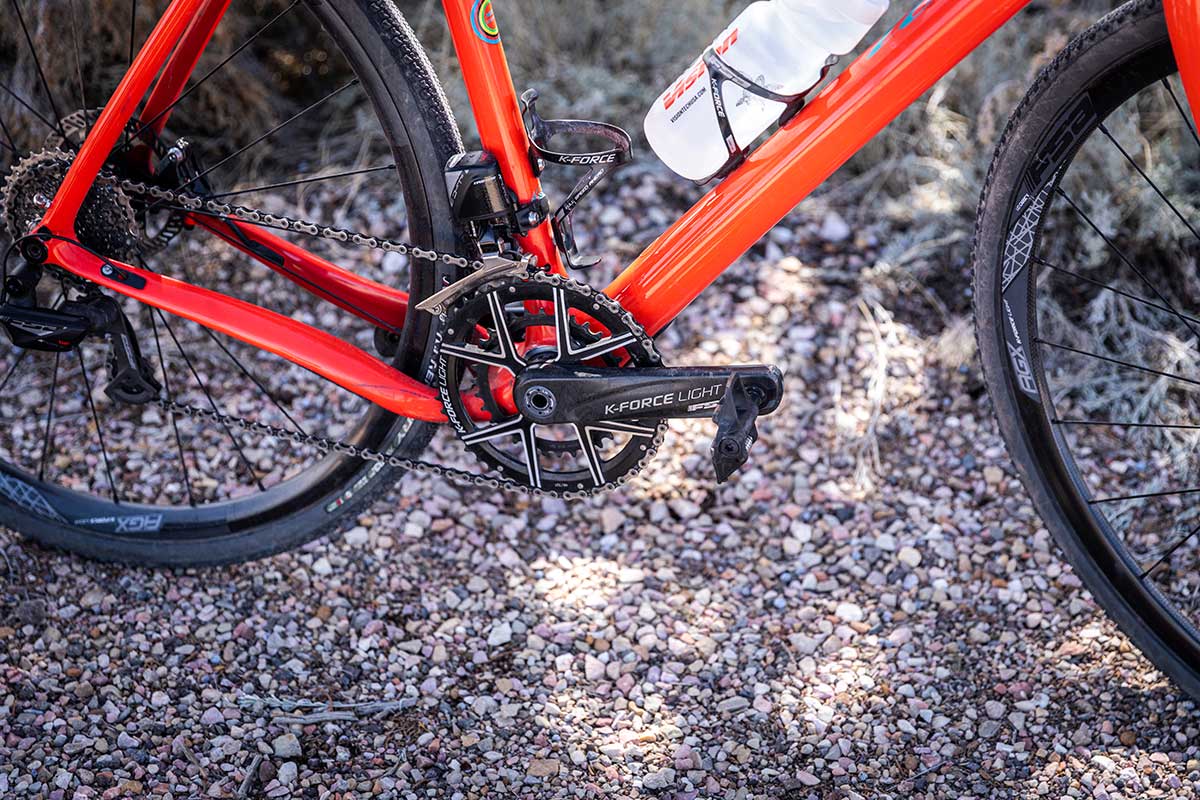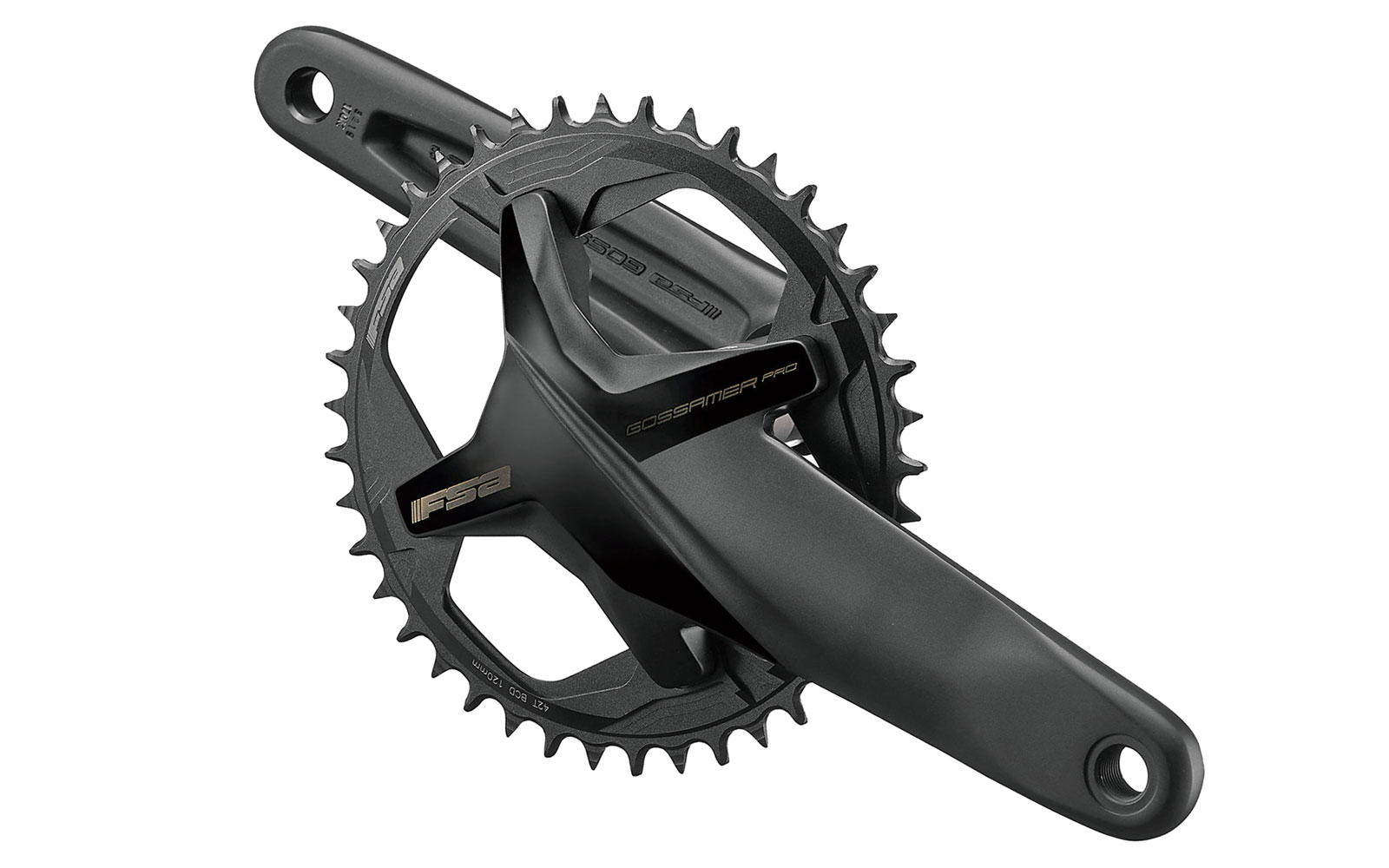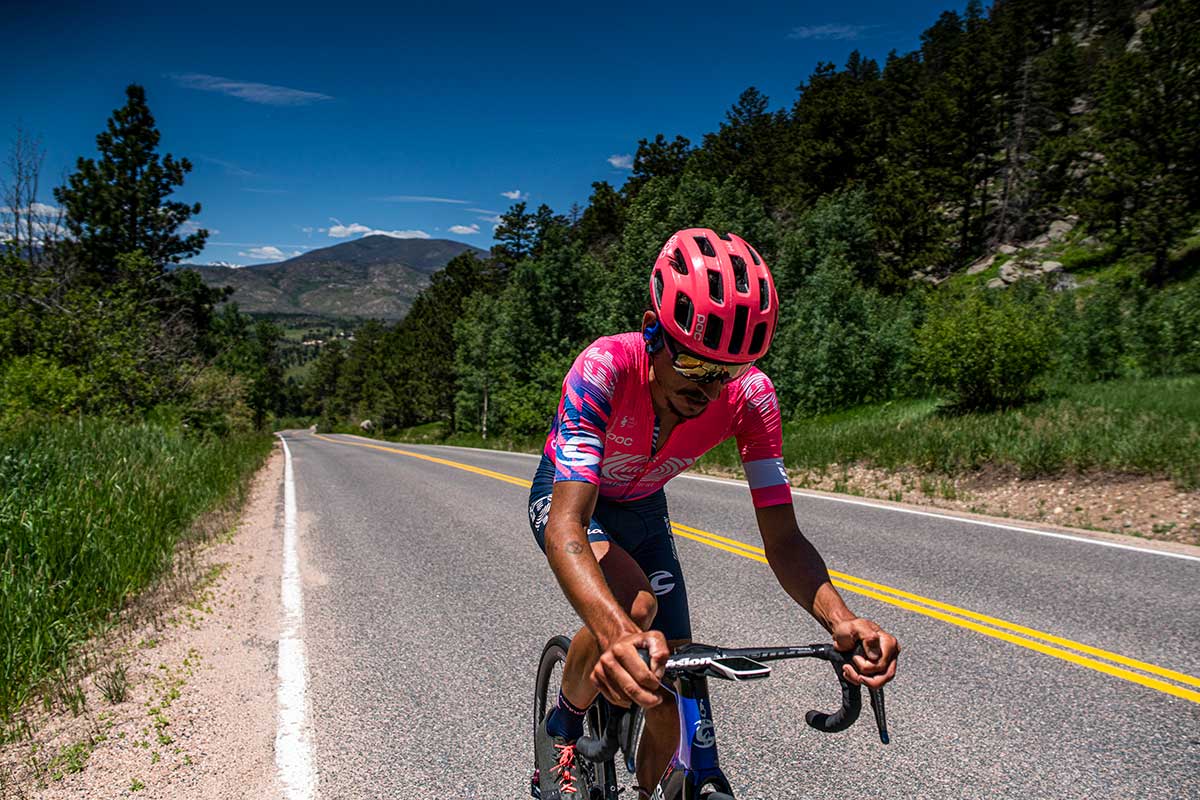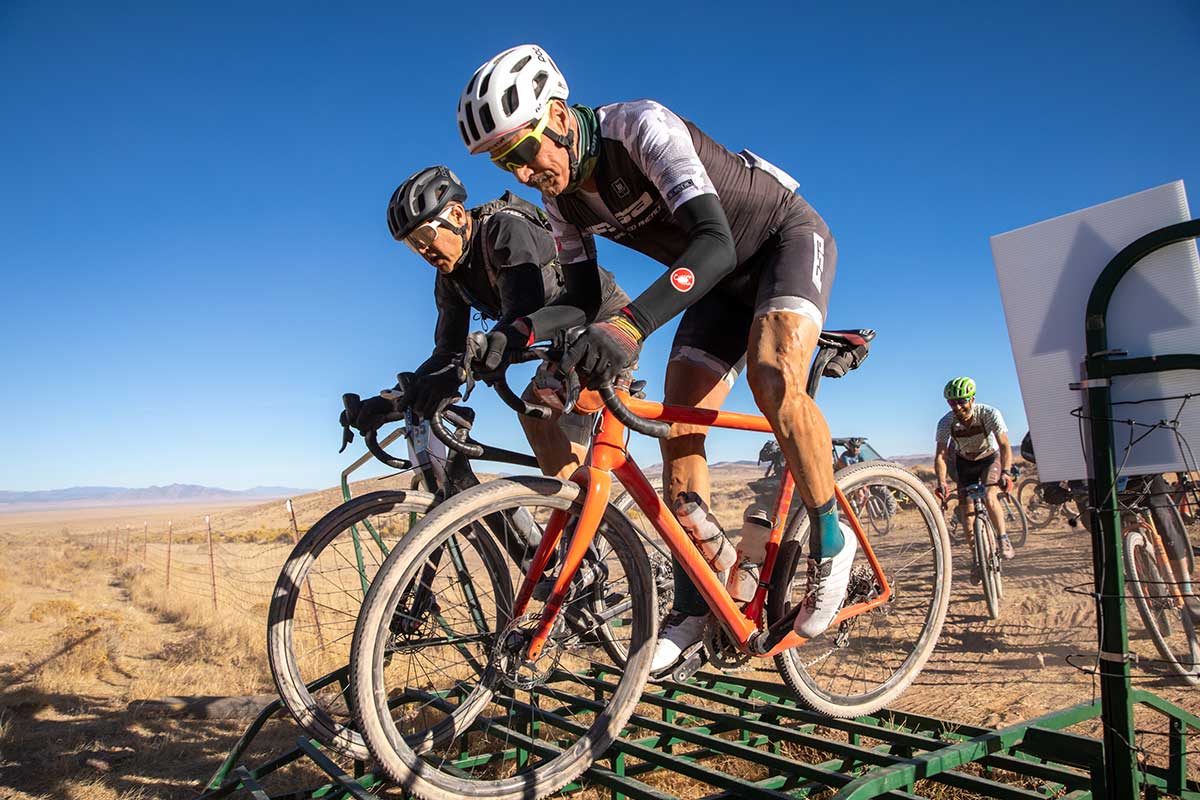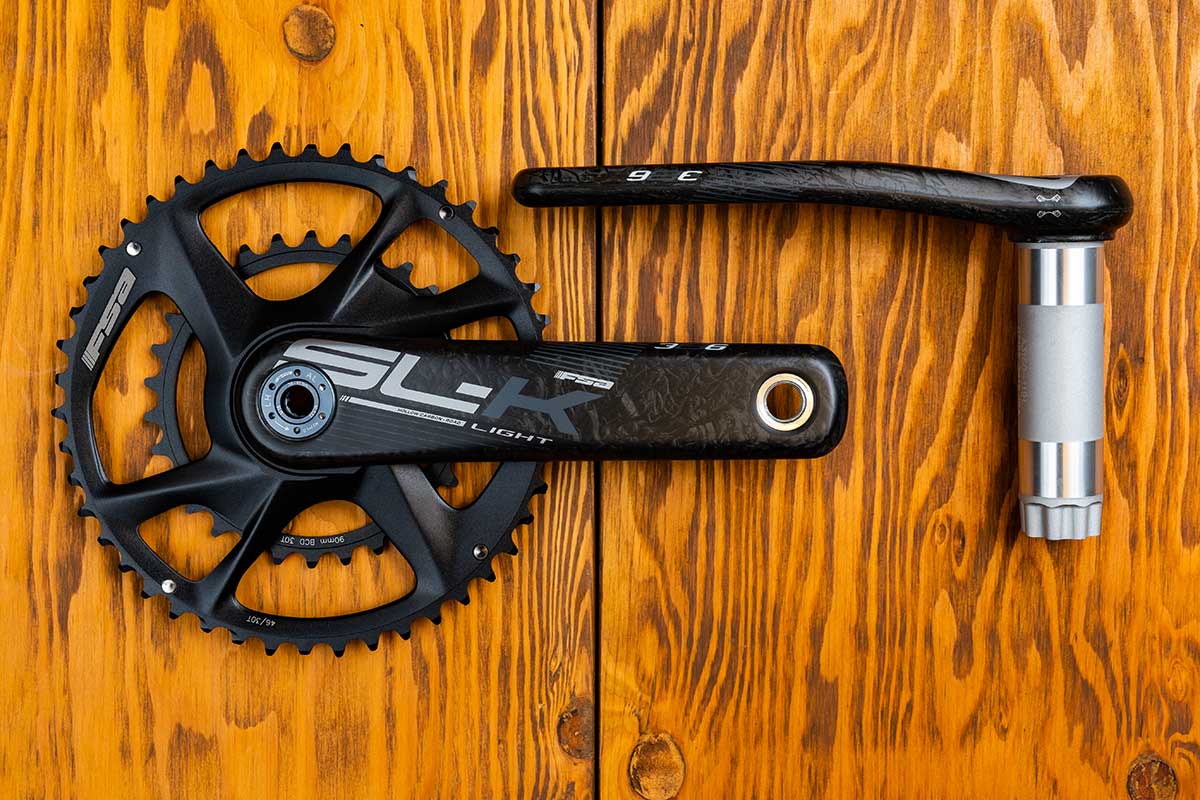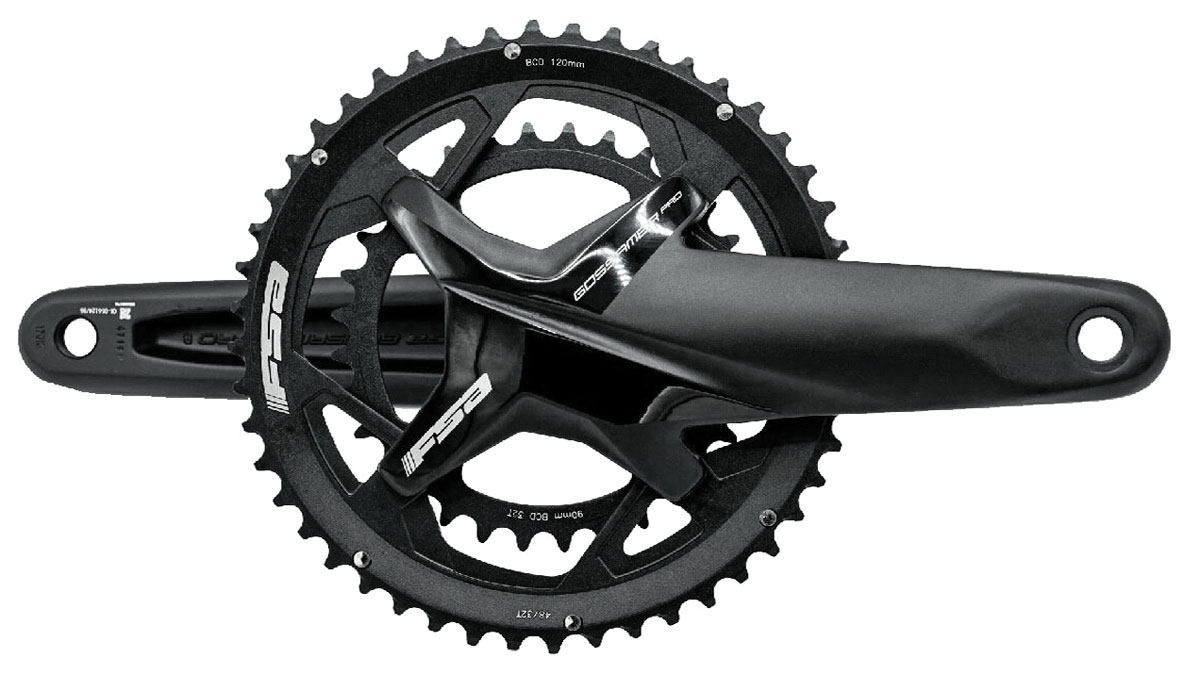We know, there’s no such thing as a stupid question. But there are some questions you might not want to ask your local shop or riding buddies. AASQ is our weekly series where we get to the bottom of your questions – serious or otherwise. This time we discuss ultra short cranks and super compact gearing for gravel riding with the experts at FSA! Hit the link at the bottom of the post to submit your own question.
Thank you so much to everyone who submitted questions to FSA for this week’s Ask A Stupid Question. You guys asked some really interesting, poignant questions on super compact gearing and ultra short cranks. John McKone and the team from FSA Road fielded, answering every single last one of them.
Everything from front derailleur adapters, crank arm length, tandem cranksets, 1x versus 2x, bikepacking-friendly gearing, MTB options to modular cranksets is covered herein. If anyone has any follow-up questions for FSA about their super compact groups and incredibly short crank arms, pop them in the comments. Enjoy!
Masters riders and folks who like to climb big hills would appreciate the super compact setup for their road bikes. For the FSA smaller front sprockets and original 52/36 riveted derailleur tabs, what front derailleur combination or extender is going to allow this?
FSA: We offer an adapter for this solution. This is an extender designed to fit between the front derailleur and the front derailleur hanger. This will allow you to choose a much smaller chainring configuration such as Super Compact and still maintain optimum shifting.
A small front gear is good for gravel riding to get a lower gear ratio with a closer rear cassette. However, in general, a smaller front ring is not the best for power efficiency. A big gear is better than the inner small gear, usually. How much energy transfer loss can be expected in comparison to a known compact like 50/34? By the way, I have your Power Box Super Compact to pair with my road cassette. I used to run 52/36-11/42 but now it is 46/40-11/28.
FSA: Agreed, in most cases. With such a large variety of rider types who all have different backgrounds and riding experiences, power efficiency can be different from one rider to another. While some will want to “power” over a climb or section of road/trail, others may be wanting to clear it within their limits.
Friction facts performed some great testing around 6 years ago. You can download their full report here. They found only around a 0.5 Watt difference switching between a 53 and 39 tooth chainring size, a 14T difference.
A more significant contribution to friction is chain angle. Cross chaining can add up to two Watts of drag. This means selecting the right gearing and being smart about shifting contribute significant friction savings.
Because our super compact gearing provides a larger difference in CR size you may find it easier to stay away from cross chaining providing friction savings over other gearing options.
Do FSA make a tandem crankset anymore? I would love to update our tandem from the older Gossamer triple crankset to a lighter weight double crankset. With the current range of 11 speed cassettes, I feel that I could do just fine with a double chainring setup and still have the same gear range as our current 10 speed triple chainring setup.
FSA: Yes, we now offer an SL-K carbon Tandem crankset with 2x gearing. This system is available in a 50/34 combo and is compatible with both 10 and 11 speed drivetrains. Check it out on our ProShop here.
If a rider switches to shorter crank arms, say from 170mm to 150mm, he or she will need to raise their saddle an equal amount, which could mean the bike no longer fits properly. Is this typically considered when deciding to use shorter arms?
FSA: That’s a great question and the simple quick answer would be to adapt the change in crank arm length to the seat height or possibly in addition to an adjustment in cleat stack height, depending on details of the fit. A local professional bike fitter would be a great place to start that process.
Do FSA have any plans to make bikepacking-suitable gears available off the shelf? I have an SL-K crankset but the 46×30 rings are still too highly geared for when you’re carrying a load of camping gear up long steep grades. I was able to take an MTB spider and put it on the arms to give me a more bikepacking friendly 38-24 combo but this wasn’t easy or cheap. It would be great if you offered alternate spiders for these cranks to make this easier for customers. Ditto for folks who might want to run a 1x set up. Also, if you say “just use an MTB crankset”… well then there’s the issue of Q-Factor and less than optimal chain lines.
FSA: For sure, the drop bar off-road category has been evolving over the past few seasons and FSA has been adapting as we can. Should we build a lower range than 46-30? Absolutely! We are always looking at getting new product out into the market for riders to have more choices. And we do offer 1x with our Gossamer series, although I would like to see that trickle upward to our top range K-Force AGX cranks.
For gravel riding, does a 50+mm chainline 1x front chainring cause excess friction, wear and loss of powertrain efficiency when in the largest rear cogs?
FSA: Great question. 1x has been the default MTB set up for some time now with some gravel riders adopting this system. With both gravel and MTB setups the 1x chainring is neither inboard nor outboard positioned, such as on a 2x chainring system. The 1x chainring is positioned in the middle, to better handle the rear cassette chainline adaptions needed.
This is somewhere around a 44-50mm chainline reference (center of the bottom bracket to the middle of a 1x chainring). Like any system, 1x or 2x, the extreme upper and lower cassette sprockets will push that chainline to its limit causing some additional stress and, ultimately, increasing required power (negligibly) compared to intermediate gears.
Ideally, a 2x system gives more range in terms of a positive chainline, such as Super Compact. Because gravel bikes typically have smaller tires, they can better accept narrower chainlines than MTBs. We offer a few different 1x chainlines to suit different needs depending on the exact application.
Why is bike gearing so stupidly high? I have (Shimano 11 speed) 11-28 and (FSA) 34/50. At 60 RPM in the lowest gear I’m riding at 6 MPH – OK, although not really low enough. At 100 RPM in top gear I’m going at 37 MPH – completely unrealistic. Over 21-22 MPH, I’m probably coasting (having almost killed myself riding up the hill in a high gear). My actual speed range is 6-10 MPH up hill, 11-14 MPH on the flat, 15-20 MPH with the wind and up to 25-27 MPH downhill; I live in a flat part of the world. Gearing which would suit me better would be a 1:1 low gear and high enough to get to 25 MPH at 100 RPM. With my current 11 spd 11-28 that would need a 28T chain ring. This yields a super compact, lightweight 1×11 set up and gives me a good range of gears which actually matches my ability. If I could use a 12 spd cassette, I’d add a 16 tooth cog (rather than a 10T) to give tight ratios in the middle of the range. I love bikes. I run an electronics engineering company and could get 4-5′ aerials out of the performance bowl at Romford skate part when I was a kid.
FSA: Lots of our gearing is developed specifically for racing. In the Tour de France the average speed is typically around 25 MPH, including all the crazy elevation they gain. Pro cyclists don’t bat an eye riding over 40 MPH. Our pro cyclist Lachlan Morton topped 75 MPH during his recent Everesting record.
The good news is that we offer tons of gearing options to allow every rider have fun and be safe riding within their own limits. We also offer in addition to Compact (50/34) and Pro Compact (52/36) our Super Compact 2x cranksets in 46/30 and 48/32 that will offer a lower ratio for either gravel or road bikes.
How does crank length relate to tire size? When mounting large volume tires the total wheel circumference increases. For example, going from 23mm tires to 32mm tires increases the wheel diameter by about 20mm. So, when traveling at a given speed, the rear wheel makes fewer revolutions with larger tires. Is it useful to decrease the crank length to compensate for larger tires?
FSA: That is an interesting question that will, no doubt, require an interesting answer. For sure, different tire diameters have an effect on speed, cadence, and even power vs rotation, but would it require a different size crank arm?
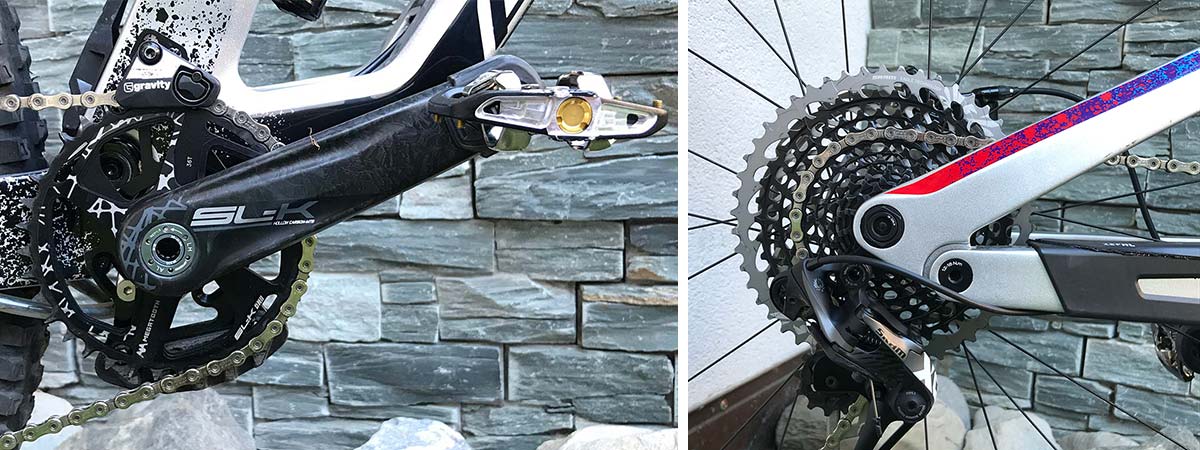
Typically, different crank arm lengths are helpful to adapt to our own individual anatomy (leg/lever length), event (track vs TT), or riding style/type such as spinners (sprinters?) and grinders who like the leverage of pushing bigger gears.
It could be a combination of all those factors that steer us towards a certain crank arm length. A tire width (height) will have an impact, but not enough to merit changing a crank arm length. Unless you’re moving from your road/gravel bike to an MTB; those bikes have such different tire heights and of course the terrain is very different too (think crank arm clearance).
Is it correct to say that a 10-50T cassette offers a 500% gear range? The range is from 10 to 50 teeth; thus, the range percentage increase is (50-10)/10 *100% = 400%. Exemplifying: if you go from 10 to 20 the increase is 100%, not 200%; from 10 to 30 the increase is 200% and so on. From 10 to 50 the range percent increase is 400%.
FSA: I think both percentages are technically correct, saying one calculation is better would be a difference of semantics. There is a 400% increase, but there is no doubt that a 50 tooth is 5 times bigger than a 10 tooth. Most manufactures use the larger 500% number, so for clarity that is probably currently the most useful communication method.
Will there be a 44/28 ring combination coming out? That would be my ideal gearing for climbing/bikepacking while keeping the jumps in the small cassette.
FSA: With the ever changing and evolving gravel category, we could see lower chainring combos adapt to a number of needs. Think bike packing with the additional weight and need to give riders that lower range to get over climbs. Also, entry level riders who simply want to make climbs easier, or anyone in need of that range.
Any chance you’ll have short crank set options (150mm-160mm arms) for us shorties, or those that want more boulder clearance?
FSA: We do offer our Gossamer Pro crankset in shorter ranges starting at 145mm and going up to 160mm in increments of 5mm. This covers most riders seeking out cranks to fit the smaller rider and the bikes that they ride. Stay tuned for updated lengths throughout our line.
Why is 46/30 (with options to go smaller) not the standard 2x gearing for recreational gravel/adventure bikes? We aren’t all 25 y/o and chasing podiums or Strava KOMs.
FSA: We’re finding that with gravel and adventure riders all looking for different experiences, the chainring options are beginning to mirror those riders. Whether that is a newbie recreational rider trying their first drop bar off-road riding experience; who would choose a much smaller Super Compact system, or the former road racer looking to expand their own horizons; who might want the power of a larger 2x, such as 48×32 or even bigger. Strava KOM hunting is optional.
Why don’t the manufacturers offer a range of chainrings and cassettes so you can pick your own ratios? That would be the best option.
FSA: That’s a great question and the quick answer is that FSA does offer a multitude of chainrings and can be built up upon request in most cases. Rings are also designed to work together. Ramps and pins, as well as spacing from the large to the small ring is optimized so that shifting is smooth and precise.
This works for both shifting to the large ring and for coming off the big ring down to small. When you start mixing ring sizes there is a noticeable degradation in shifting performance because things are not lined up correctly and either dropped or wedged chains can happen, as well as general poor shifting performance.
Of course, there are limitations with BCDs and frame allowances, but riders can customize their drivetrains easier now than ever before. As for new bikes, even though the manufacturers offer only one choice typically, your LBS can help out in making those changes on a new bike purchase.
What can you do with frame that has a braze on front derailleur tab that doesn’t go low enough for 46/30 or 44/28 chain rings? Do you have an adapter to lower the front derailleur?
FSA: We do offer an adapter that will allow you to use a smaller front ring combo such as Super Compact. This simple device works on any front derailleur hanger, fixed or clamp-on style, to make it an easy way to choose what chainring combo you like.
I’ve been riding for nearly 30 years and would consider myself sensitive to changes in crank arm length. I prefer 172.5mm on the road for a good balance of leverage and acceleration and 175mm on my commuter for the slightly lower cadence I have when standing on the pedals uphill while overburdened with groceries, etc. I can see the appeal of smaller rings, but how could I benefit from shorter cranks on a road bicycle?
FSA: Crank arm length can be beneficial for a number of reasons, the most important is a rider’s own lever arm length (leg length). Of course, there are several other factors such as event specifics (think track, Tri, MTB), but for recreational riders who do not have a competitive need for a specific crank length, there are simple formulas, such as leg length x 5.48.
For example, triathletes use very short crank arms so that their muscles are ready for the transition to the run leg. Road riders who, like you, enjoy the balance of spinning and some leverage, stay with what works. And if you are a triathlete or require a shorter crank arm length due to your personal leg length, shorten it up.
Why not offer smaller rings than 46×30 (which is not IMHO really small), especially when these would fit on the existing BCDs on some FSA cranks? 44×28 or 42×28 should be easy to implement with 90mm BCD, but these combinations don’t exist. The modular cranks could fit any size rings, like say 42×26, 38×24, etc. Not everyone is a racer or has dropped carbon stays(!), and those bikepacking could usefully use as low a gear as they could get.
FSA: Agreed! That is one of the big benefits of a modular chainring system; no BCD to limit chainrings. For sure, when you increase the weight of the bike, lower gears make it easier for bikepacking and getting from point A to B.
FSA does offer both a 1x and 2x system to accommodate a rider’s needs, although with the evolution of bikepacking I can see FSA offering lower ranges. Current 2x road front derailleurs are optimized with work with larger chainring sizes.
Reducing the outer chainring size too much can have a negative effect on shifting performance. Smaller chainrings will require derailleur cages that are more similar to MTB front derailleurs.
How can you calculate for cyclocross racing and a 1x setup where the sweet spot is with crank length, chainring combo? I’m running a 36-9 13 spd cassette with 170mm x 40T up front. I need burst power for steep short climbs, quick acceleration out of corners, and a high top speed for path sections. Cadence around 80 to 90 RPM is ideal.
FSA: Changing your crank arm length won’t affect your speed at a given RPM. Changing your crank arm length will only change the pedal force you need to apply. One way to compare crank arm lengths, gearing changes, and wheel and tire sizes is with gear inches. Sheldon Brown has a useful gear inch calculator.
Which cranks are available in sub 165mm sizes? Are these available as 1x or can they be converted to 1x?
FSA: We do offer cranks down to 145mm in our Gossamer Pro series, although stay tuned for availability.
I would like an all-road bike for asphalt and gravel riding. Would a 1x drivetrain setup be OK for my everyday bike?
FSA: Of course, 1x introduces a level of simplicity and ease of use. Although it is not a solution for all, it remains the default system for most, if not all, current MTB bikes where terrain is super varied.
Where you would want to consider a 2x system is for bikes (think drop bar primarily) where gear range jumps are much closer together. That gives the rider a cadence that is smoother from one gear to the next. This is especially true on road and gravel.
Riders not wanting big jumps in gears and ultimately, a rider who favors those more subtle changes will gravitate towards a 2x system. Roadies generally tend to also favor this system for the same reason; a closer gear range.
I’ve always been in the frame of mind that 1x vs 2x is very subjective to the rider type, the terrain they ride, and background of the rider’s experience. The good news is that FSA does offer a wide range of 2x cranksets along with 1x that would work great with your choice of set up.
Why is the left arm pedal nut assembly on my FSA SLK Light crankcase loose? Why haven’t FSA replied to my emails on this matter?
FSA: Sorry to hear that. Suggest reaching out directly to our USA tech and service team- tech@fullspeedahead.com. They would be happy to help with any issues you are experiencing.
Thank you very much to John McKone and the FSA Road team for answering all the Bikerumor Readers’ questions!
Got a question of your own? Click here to use the AASQ form to submit questions on any cycling-related topic of your choice, and we’ll get the experts to answer them for you!
